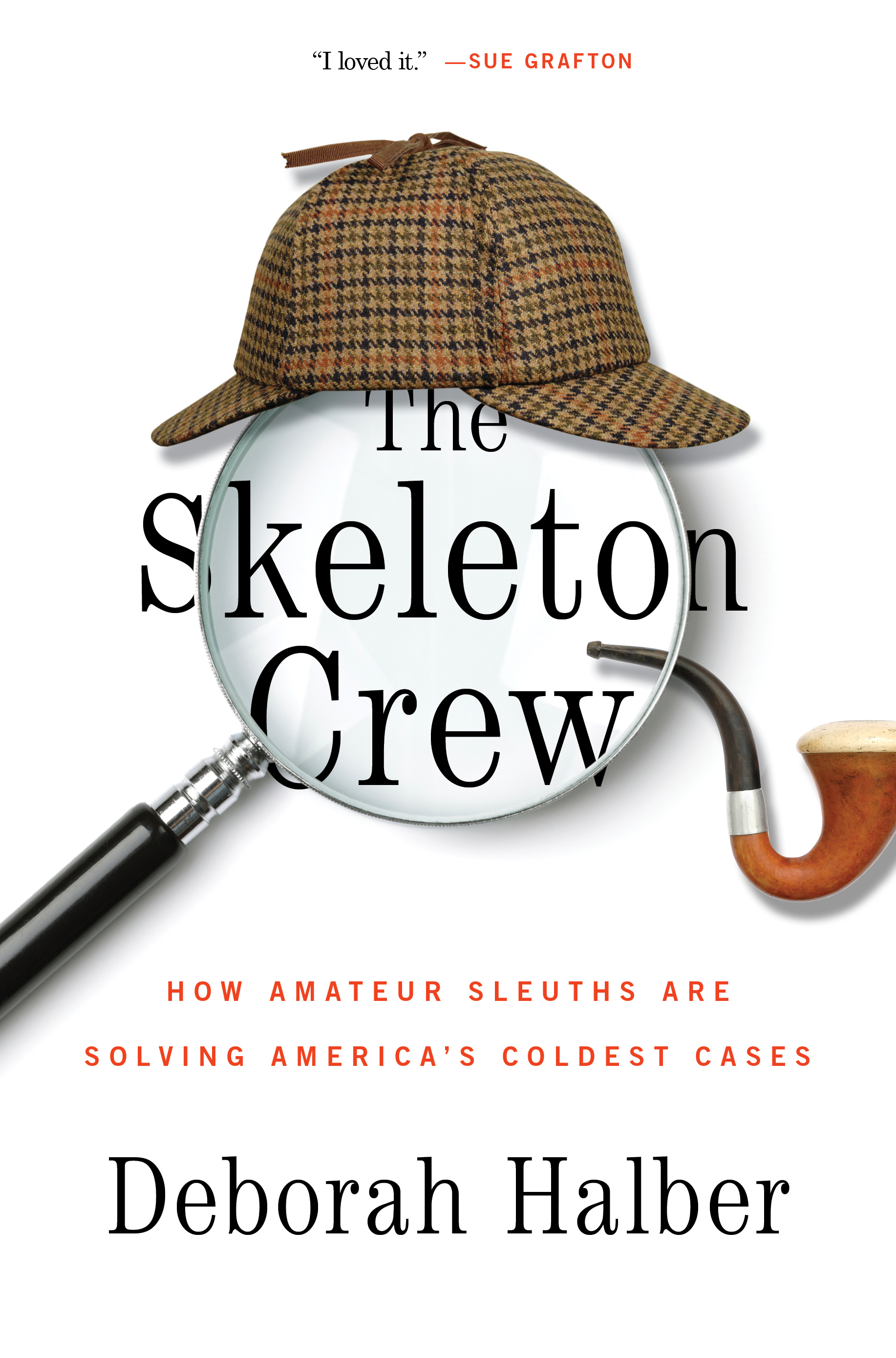
In researching and writing my new book, The Skeleton Crew: How Amateur Sleuths Are Solving America’s Coldest Cases, I came across a community of novice detectives tackling cases as thorny as those in any James Patterson novel. What makes some of these real-life cold cases even more perplexing is that the victims are unidentified.
The National Institute of Justice estimates that some 40,000 unidentified remains—the population of North Miami Beach—are stowed in the back rooms of morgues or crematoriums, or buried as Jane and John Does in potters’ fields. No one seems to claim the Does as they get passed among coroners, medical examiners and overworked detectives.
Yet the bodies often belong to missing people whose loved ones are actively searching for them, and the amateur web sleuths who solve their stories are motivated by a genuine desire to bring closure to families.
When the Internet was still in its infancy, civilians started compiling details—where and when a body was discovered, scars or tattoos, items of clothing or jewelry—in homespun databases. Then organizations such as the Florida Unidentified Decedents Database and the National Unidentified and Missing Persons System (NamUs—yes, like “Name us”) began to provide crowdsourced fodde, allowing volunteers to link a body in, say, Idaho to a person reported missing in California.
From The Skeleton Crew—a streetwise Massachusetts police dispatcher, a one-time pig farm manager from West Virginia, a chain-store employee in Mississippi—here are a few tips on how to start cracking cold cases.
1. Leave no digital stone unturned. I was struck by how thoroughly the web sleuths scoured the Internet for information, and how willing they were to run with a lead, no matter how improbable. One of the most prolific sleuths swears by a geographic approach: She starts with the location of the body and painstakingly works her way outward in concentric circles, checking multiple sources for reports of missing persons. That’s how she paired a forensic reconstruction of a skull found embedded in a bucket of cement in Missouri with a photograph of a missing Iowa man.
2. Invest in for-fee services. Although free options abound—Google News, for instance—paying fees gets you access to tens of thousands of public records and links to county and state databases. Subscriptions to SearchSystems.net, NETR online or Ancestry.com offer access to census, voter, and military records, marriage and death certificates, property titles, business permits, and bankruptcy and criminal files.
When a web sleuth mentioned her reliance on Ancestry.com, I was mystified. How can you search for someone’s relatives without a name? It turns out sometimes you do have a name, or part of a name. A woman’s bones found in Baltimore in 2000 were clad in white tennis shoes, jeans, and a T-shirt commemorating the “Wynn family reunion.” A sleuth tracked down the family members whose names adorned the shirt, and while they had no connection to the dead woman, one of them recalled the T-shirt being given to a friend of a friend who attended the reunion, and the trail led to the identification of Brenda Wright.
3. Develop a tolerance for rejection. Nobody loves the web sleuths: not the cops, and not fellow web sleuths. Online communities abound with competitive drama. Some users on these sites hide behind screen names to ratchet up the vitriol. Early on, law enforcement lambasted the “Doe nuts” as time-sucking nuisances, although a handful of detectives now say they welcome the help.
4. Have a strong stomach. Many of the sites are truly disturbing, and carry warnings (“may be uncomfortable for some viewers”). Even the ones that Photoshop out the more distressing details and replace closed lids with staring digitized eyeballs can’t really gloss over the fact that these people are dead. And many of them did not die in pretty ways.
5. Think visual. Depending on your level of commitment, be prepared to scan a mind-boggling number of images. Being visual can backfire: Some web sleuths become fixated on a perceived similarity between the deceased’s nose—or eyebrows or jawline—and that of a missing person. Photos can be deceptive, and features change in death. It’s often more productive to note an abdominal scar or a distinctive tattoo on the victim’s body. Recalling a missing woman’s kangaroo tattoo helped Tracie Fleischhut of New York identify a young female victim found dead in Maryland.
I’ve tried web sleuthing myself and found it fiendishly difficult—the proverbial needle in a haystack. But resourceful web sleuths have indeed solved cold cases that had stymied law enforcement for decades. With determination and time, you could be one of them.
Deborah Halber is a Boston-based journalist and member of the National Association of Science Writers. She has chronicled breakthroughs in neuroscience, molecular biology, energy and technology at MIT and Tufts. The Skeleton Crew is her first book.
More Must-Reads from TIME
- Cybersecurity Experts Are Sounding the Alarm on DOGE
- Meet the 2025 Women of the Year
- The Harsh Truth About Disability Inclusion
- Why Do More Young Adults Have Cancer?
- Colman Domingo Leads With Radical Love
- How to Get Better at Doing Things Alone
- Michelle Zauner Stares Down the Darkness
Contact us at letters@time.com